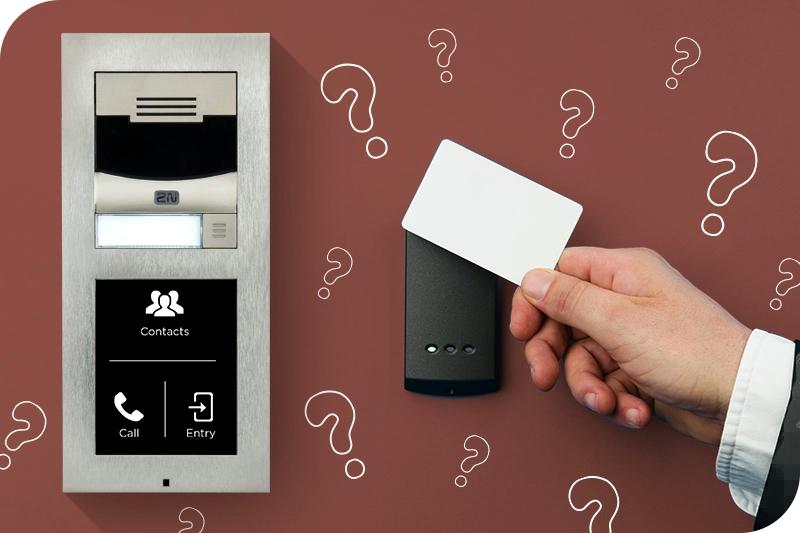Are You Really Still Installing Access Control Readers Under Intercoms?
 Marek Chládek, 9. 12. 2022 | 4 min read
Marek Chládek, 9. 12. 2022 | 4 min read
Unfortunately, you see it quite often: an intercom outside a building’s main entrance with a separate access control reader (from a different company) underneath. But why is it so common? There are two reasons why is this happening. Let’s discover them.

1. Installers don’t know that intercom can include access control reader
Installers and integrators sometimes think of intercoms in a somewhat limited narrow way: that they’e simply devices that only allow visitors to gain access to a building. The visitor calls the reception or tenant, and that person decides if the guest can enter the building. In some ways, that’s understandable – for a long time, that was the whole point of intercoms.
As a result, when installers and integrators want to offer tenants or employees access control reader options besides old-school keys, they’re under the impression that it’s necessary to opt for both an intercom and an access control reader.
But this isn’t necessary! Intercoms like the 2N® IP Style contain access control reader too,as well as a variety of access control reader options – smartphone access for younger employees, RFID for those who prefer traditional cards, PIN as a backup option and QR codes for visitors or cleaning staff.
Other IP intercoms also support facial recognition, for example – but you need to be very careful to ensure that these devices actually work. In some cases, such a system can be fooled with just a photo of an authorised person, thus undermining the security of the entire building.
 Stay up-to-date with the latest news. Subscribe to our newsletter.
Stay up-to-date with the latest news. Subscribe to our newsletter.
2. There’s a different access control reader system in the building
The second reason why it’s still common to see intercoms and access control readers alongside one other is that installers and integrators use different vendors for the intercom and the rest of the access system. The access system manufacturer, of course, offers its own readers and those are what’s installed under the intercom.
The decision to use two providers might seem like an odd choice because using one vendor to manage both the intercom and the access system saves time and eliminates the need to understand and manage two interfaces. However, the fact remains that there are sometimes situations when installers and integrators need to use more than one vendor in a project - if the developer insists on a specific access control reader manufacturer, for example.
However even in this situation there is still no need for two devices at the entrance! You can connect an advanced intercom that has an inbuilt access control reader to another manufacturer’s access system – via a Wiegand module or an OSDP module for example. This is exactly the reason 2N uses an open protocol and develops products which can be integrated with those of other companies.
Conclusion
Don’t ruin entrances with additional devices users don’t need, and don’t spend money on them either – instead, choose IP intercoms that have access control readers built in and offer your users more versatility. If you can, administrate solutions from one vendor and use one system rather than two . And if you can't, use Wiegand or an OSDP module and choose a company that uses open protocols and recognises the importance of 3rd party integration capabilities.